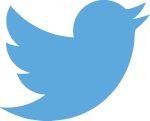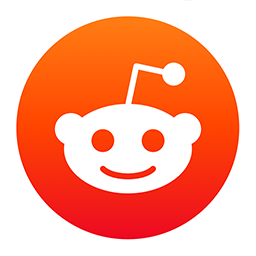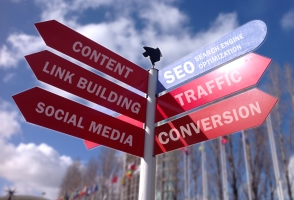
We’ve come a long way in just a few years.
The Internet reinvented how we communicate with each other. Websites gave us efficient ways to share content and e-mail began outracing the post office’s mail carriers. Shortly after that, the world started getting its first taste of social media.
And it completely changed the way we communicate again.
Sure, we had message boards, and those were great discussion forums. Six Degrees, LiveJournal, Friendster and a few other names took them a step further by allowing you to make profiles that were the highlight of your visitors’ experience instead of a feature. Sharing information was encouraged, but often for specific interactive experiences like blogging or dating.
Nothing took the world of social media by storm like LinkedIn and Myspace though.
LinkedIn thrived by claiming a niche and being the best platform within it. A network for businesses and professionals filled a need that many still utilize today, and many social media platforms founded since then have taken this idea and run with it.
Myspace took a much more general approach by marketing itself as being for everyone. When it arrived, it was as though the world had finally agreed this was THE way for us to stay in touch with friends and family over any distance. This was an especially big deal for my high school and college friends who were scattering to the four corners of the globe back then.
Unfortunately, this didn’t last for a number of reasons, so newcomers Facebook and Twitter became the new social media mainstays after a few years due to their significantly improved user experience, features, and security.
Both of these names have managed to hold sizable shares of our attention since then and are key tools for checking up on our friends and family, browsing marketplaces for awesome deals, showing off something cool we discovered, or sharing what’s on our minds.
That last one is key – despite all these years of changes, sharing information is still at the core of what social media wants you to do (shocking, I know). Our voluntary deluge of information coupled with stable, established platforms used by billions has been a game changer not just for us, but also in the world of business.
Jump ahead to:
Companies have been quick to leverage social media’s stability and reach.

Previous luminaries of mass communication such as the television, the newspaper, and the radio relied on you tuning in at specific times, being in specific areas, and paying attention to specific segments. Social media marketing is interwoven with content you care about in places you often can’t avoid seeing. It’s also there whenever you log in, wherever you are (despite the best efforts of ad blockers).
Add in an unprecedented audience constantly sharing their interests, memories, and even the humdrum of their daily lives, and it’s no wonder companies have been taking advantage. Consumer information is more accessible now than it has literally ever been. Showing up in billions of news feeds is outside most marketing budgets, however, so reaching the people who are most likely to buy is your new hurdle.
So how do you reap the best return on investment (ROI) for both your time and money? Since social media giants have done most of the heavy lifting by sifting through your potential customers’ information already, your next move should take advantage of that by setting up a targeted marketing campaign.
While this sounds easy on paper, you’ll still need to come up with a game plan in order to attract interest in your business. To help you get started, here are 5 steps we recommend for a successful social media campaign:
- Decide what you want your social media platform(s) to do
- Determine which platforms have the most responses from your followers
- Find ways to engage consistently with your audience
- Link to new items or existing areas of importance in your posts
- Develop a budget to create a following
Different businesses will want to focus on some of these points more than others, and this is by no means an exhaustive list. That said, all are worth considering depending on where you are, what your market is, and where you want to be.
What does social media success mean to you?
 You should have an answer to this question before ever posting to your profiles – it’s the foundation that everything you do is built on. Unlike a typical foundation, however, this one isn’t set in stone. Your answer to this question can (and should) definitely evolve as business needs change. So long as you keep it in mind before taking every action, you’ll never stray too far from the path you want.
You should have an answer to this question before ever posting to your profiles – it’s the foundation that everything you do is built on. Unlike a typical foundation, however, this one isn’t set in stone. Your answer to this question can (and should) definitely evolve as business needs change. So long as you keep it in mind before taking every action, you’ll never stray too far from the path you want.
If you’re having trouble coming up with satisfactory goals, ask yourself questions like these:
- Am I trying to promote awareness of my brand?
- Am I trying to establish an audience?
- Am I using social media as a sales platform?
- Am I fostering discussions about my products or services?
- Am I trying to connect more with my current audience?
- Am I trying to get feedback from followers to gather data?
In our case, Midwest Websites uses social media for brand awareness and to establish an audience. When we publish posts and videos designed to help you succeed online, we link to them there as well. Each post is crafted to demonstrate that we’re your advocate, highlight what we can do for you, and prove that we have the skill and expertise to back up our claims. As we become more established, our focus may change, but we’re comfortable with the progress we are making with this goal at present.
There are a lot of social media platforms. Which are right for my business?
This is an excellent question, and the answer that is right for you will vary depending upon your target market, what you do, and your social media goals. There may even be an element of trial and error as you spend some time trying out different platforms. Note that this is not an exhaustive list, but it should cover most of the key players you’ll need to know in order to get started.
 Facebook
Facebook
Depending on whom you ask, 60-80% of American adults currently use Facebook, making it a staple for any business. Their ease of use, stable platform, convenience, and popularity all play key roles in keeping users of all ages engaged, ensuring they’ll continue to thrive for years to come.
Despite Facebook’s general appeal and broad audience, success does not always come easily on this platform. Your largest hurdle is almost always going to involve your advertising budget, a subject we’re going to talk more about later.
 Pinterest
Pinterest
Pinterest is basically the bulletin board of the Internet. Images and videos can be pinned to boards that users are able to organize, collaborate on, and share with others.
Best of all, you can link these pins to specific web pages, which many companies selling creative, physical products take advantage of while engaging with their followers.
Pinterest’s popular demographic has historically been women, but millennials and dads are definitely on board as well, giving you a pretty diverse crowd among the 250 million active Pinterest users each month.
 Instagram
Instagram
Instagram is the other visually driven social media giant and has been owned by Facebook since 2012. Much like Pinterest, Instagram’s focus is on mobile users, but their social media platform offers a few different features including filters, a more robust commenting system, and effective hashtag integration that is both designed and needed to keep things organized.
Unlike Pinterest, linking is far less prominent outside of paid ads, being limited to your profile at this time. Its desktop experience is also atrocious (not that Pinterest’s is amazing, but it’s at least usable). These are pretty minor flaws compared to the benefits though. Instagram caters to a much larger audience than Pinterest, clocking in at roughly 1 billion users each month. Millenials make up the majority of the userbase, clocking in at approximately 70%.
 LinkedIn
LinkedIn
For businesses looking to establish connections with other professionals, LinkedIn (now owned by Microsoft) has remained a big player for over 15 years.
A favorite platform among college graduates, over 61 million of LinkedIn’s 500 million users hold significant influence in their fields. Not a bad audience for those looking to get their name out there!
Commercial contractors, web designers, and IT professionals are just a few examples of industries that can benefit from active LinkedIn use, but any company looking to establish business to business relationships should invest time and effort becoming a part of this network.
 Twitter
Twitter
Companies that affiliate themselves with established brands will often find success with Twitter, as short updates on your company or something you bring to a favorite hobby, franchise, or popular brand can pull the attention of existing audiences. Twitter is also somewhat unique in that it is a pretty big player in the roles of PR and customer service for many businesses, demonstrating how you engage with customers even in tough situations.
 YouTube
YouTube
If your business focuses on content creation, getting on YouTube (owned by Google) should be one of your top priorities. While visually focused like Instagram or Pinterest, YouTube is designed specifically for videos, and sees considerably more use than the two combined at approximately 2 billion users each month. TV, entertainment, help guides, and music are all huge parts of this massive ecosystem, and its only real peer in the social media space is Facebook at over 2.3 billion users each month.
 Reddit
Reddit
Billed as “the front page of the Internet”, you’ll find over 330 million monthly users on what is essentially the ultimate message board. Subjects are broken up into subreddits, where communities gather to discuss virtually anything and everything. Paid ads that run on relevant subreddits are fairly easy to set up, allowing you to showcase your product and services without getting mired in a sea of discussion threads.
Like Twitter, this can be another outlet for direct engagement and PR, but should be used with significant care. A wrong move can do considerably more harm than good, especially if your first impression is to promote yourself rather than build trust and goodwill in the community.
That hasn’t stopped authors and other people individually famous in their market from finding success here. The popularity of viral posts and AMA (Ask Me Anything) topics can truly be a force to behold.
Stay engaged with your social media platforms – it takes time for them to grow.

It’s easy to become discouraged when you don’t see immediate rewards for work you’ve put in, especially in social media environments designed to revolve around interaction. Don’t give up though – the key to building a following is consistency. Teaching people when to keep an eye out for your content helps ingrain habits that lead to increased engagement when it comes out.
Developing these behaviors also takes time, so don’t be surprised if it takes a year or two before you start seeing serious fruits from your labor. This is doubly important for those who produce content beyond their social media profiles (blogs, videos, etc.). You want people to be actively excited about your latest content, and leaving them wondering when it is coming out can sometimes diminish that feeling.
Fortunately, while this sounds difficult, it doesn’t take a lot of work to actually do. 2-3 posts a week is often enough while you are building a following, meaning it isn’t going to take a lot of time out of your workday. The only real trick behind crafting your posts is writing them in a way that encourages conversation and direct engagement. Here are a few tips that can help you do exactly that:
- Maintain a conversational tone
- Ask questions instead of or in addition to dictating facts
- Be as clear as possible about what you say
- Stay positive wherever possible
- If you’re discussing something on your website, link to it
All of this sounds simple, but it can be easy to forget one or more of these rules of etiquette in the moment. Taking a moment to reread your words before your post is always a good idea, considering how you’d react if someone else published it instead. Once it’s out there, there’s no taking it back.
Also keep in mind that emotions and tones are notoriously difficult to convey through text, so subtle nuances like sarcasm should be exercised with extreme care. Emojis can help you with this problem to some degree, but some view them as unprofessional. Knowing your audience will be key in determining whether they’re safe to lean on or even use at all.
Social media can help you turn small efforts into SEO gains.
 Social media signals have been “on again, off again” in Google’s SEO algorithm (officially, they’re off right now), and current experts are somewhat divided on social media’s role in an SEO strategy. Many social media platforms like Facebook and Twitter don’t even offer the basic benefits of dofollow backlinks, opting to use nofollow links instead.
Social media signals have been “on again, off again” in Google’s SEO algorithm (officially, they’re off right now), and current experts are somewhat divided on social media’s role in an SEO strategy. Many social media platforms like Facebook and Twitter don’t even offer the basic benefits of dofollow backlinks, opting to use nofollow links instead.
We’re of the mindset that social media can assist your SEO strategy in a couple ways, but you’ll have to look behind the scenes to see what it’s actually doing for you.
The first benefit is pretty straightforward, and all that’s needed to receive it is to create your social media pages. Since Google does index each of these newly created spaces, that gives you additional opportunities to show up in results when someone searches for you.
As you develop an audience, the more important benefit of social media is its ability to drive traffic to your website. Your good posting habits from earlier will play a key role in your success here, allowing you to translate content creation, e-commerce sales, and other website updates into organic traffic Google’s search engine algorithm can’t help but notice.
Nofollow links may not directly aid your website’s authority, but with perks like these, who needs them?
Social media is becoming a pay to play environment.
While organic traffic is one of the best SEO perks social media currently offers, it has become considerably harder to attract courtesy of an analysis Facebook CEO Mark Zuckerberg announced at the start of 2018. Dedicated users of the platform (including myself) were quick to notice a steep decline in ads, which is not good news for many businesses.
That’s not to say organic traffic has become impossible on Facebook – pages that are liked and shared by your friends will still show up in your news feed on a semi-regular basis. It just makes those simple actions 10 times more important for attracting new likes/followers/shares/etc. It also means ad space is now at a premium, and to the shock of nobody, carries a premium price tag along with it.
Facebook isn’t the only social media platform encouraging paid ads either. Twitter, Instagram, and Pinterest are just a few of the other major players offering their preferential services to companies for a price. While this is not especially surprising (social media platforms are still businesses at their core), it does mean you need to consider making social media marketing part of your advertising budget.

As with all types of advertising, the effectiveness of social media ads can vary considerably. While it’s true you’ll get more out of them the more you spend, maximizing your return on investment (ROI) is critical for ensuring every dollar is doing as much for you as it can. To do that, you’ll have to do some research on your market, target the right audiences, and narrow down the best social media platforms to advertise on.
Taking all the right steps to prepare may still leave your ROI lower than you want – especially with cost-effective advertising plans. You’ll probably have some trial and error until you strike the best balance between your budget and results, but this legwork will at least give you a fighting chance for success. Failing to prepare all but guarantees you’ll be throwing your money away while leaving you with no information about what isn’t working.
Social media marketing seems like a lot of work, can you help me out?
We absolutely can. While we generally do not recommend social media marketing by itself to build your SEO, we can definitely work it into a more comprehensive option for you. Give us a call at 319-229-5225 or send us an email through our contact page, and we’ll be happy to help you create and implement an SEO strategy that meets your needs.

Braden is one of the founders of Midwest Websites, and has been professionally writing and developing websites for over 7 years. His blog posts often take an experience from his life and showcase lessons from it to help you maximize online presence for your business.

